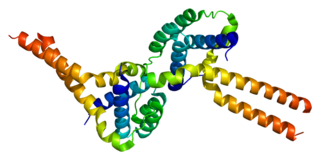
Phospholipases A2 (PLA2s) EC 3.1.1.4 are enzymes that cleave fatty acid in position two of phospholipids, hydrolyzing the bond between the second fatty acid “tail” and the glycerol molecule. This particular phospholipase specifically recognizes the sn-2 acyl bond of phospholipids and catalytically hydrolyzes the bond, releasing arachidonic acid and lysophosphatidic acid. Upon downstream modification by cyclooxygenases or lipoxygenases, arachidonic acid is modified into active compounds called eicosanoids. Eicosanoids include prostaglandins and leukotrienes, which are categorized as anti-inflammatory and inflammatory mediators.
Platelet-activating factor, also known as PAF, PAF-acether or AGEPC (acetyl-glyceryl-ether-phosphorylcholine), is a potent phospholipid activator and mediator of many leukocyte functions, platelet aggregation and degranulation, inflammation, and anaphylaxis. It is also involved in changes to vascular permeability, the oxidative burst, chemotaxis of leukocytes, as well as augmentation of arachidonic acid metabolism in phagocytes.

Phosphoinositide phospholipase C (PLC) is a family of eukaryotic intracellular enzymes that play an important role in signal transduction processes. These enzymes belong to a larger superfamily of Phospholipase C. Other families of phospholipase C enzymes have been identified in bacteria and trypanosomes. Phospholipases C are phosphodiesterases.

Lipoprotein(a) is a low-density lipoprotein variant containing a protein called apolipoprotein(a). Genetic and epidemiological studies have identified lipoprotein(a) as a risk factor for atherosclerosis and related diseases, such as coronary heart disease and stroke.

Phospholipase A1 encoded by the PLA1A gene is a phospholipase enzyme which removes the 1-acyl. Phospholipase A1 is an enzyme that resides in a class of enzymes called phospholipase that hydrolyze phospholipids into fatty acids. There are 4 classes, which are separated by the type of reaction they catalyze. In particular, phospholipase A1 (PLA1) specifically catalyzes the cleavage at the SN-1 position of phospholipids, forming a fatty acid and a lysophospholipid.
Gq protein alpha subunit is a family of heterotrimeric G protein alpha subunits. This family is also commonly called the Gq/11 (Gq/G11) family or Gq/11/14/15 family to include closely related family members. G alpha subunits may be referred to as Gq alpha, Gαq, or Gqα. Gq proteins couple to G protein-coupled receptors to activate beta-type phospholipase C (PLC-β) enzymes. PLC-β in turn hydrolyzes phosphatidylinositol 4,5-bisphosphate (PIP2) to diacyl glycerol (DAG) and inositol trisphosphate (IP3). IP3 acts as a second messenger to release stored calcium into the cytoplasm, while DAG acts as a second messenger that activates protein kinase C (PKC).

Platelet-activating factor acetylhydrolase IB subunit alpha is an enzyme that in humans is encoded by the PAFAH1B1 gene. The protein is often referred to as Lis1 and plays an important role in regulating the motor protein Dynein.

Coagulation factor XIII A chain is a protein that in humans is encoded by the F13A1 gene.

Low density lipoprotein receptor-related protein 1 (LRP1), also known as alpha-2-macroglobulin receptor (A2MR), apolipoprotein E receptor (APOER) or cluster of differentiation 91 (CD91), is a protein forming a receptor found in the plasma membrane of cells involved in receptor-mediated endocytosis. In humans, the LRP1 protein is encoded by the LRP1 gene. LRP1 is also a key signalling protein and, thus, involved in various biological processes, such as lipoprotein metabolism and cell motility, and diseases, such as neurodegenerative diseases, atherosclerosis, and cancer.

Coagulation factor XIII B chain is a protein that in humans is encoded by the F13B gene.

Guanine nucleotide-binding protein G(q) subunit alpha is a protein that in humans is encoded by the GNAQ gene. Together with GNA11, it functions as a Gq alpha subunit.
In enzymology, a 1-alkyl-2-acetylglycerophosphocholine esterase (EC 3.1.1.47) is an enzyme that catalyzes the chemical reaction

Phosphatidylinositol-glycan-specific phospholipase D is an enzyme that in humans is encoded by the GPLD1 gene.

V-type proton ATPase subunit B, brain isoform is an enzyme that in humans is encoded by the ATP6V1B2 gene.

V-type proton ATPase 116 kDa subunit a isoform 1 is an enzyme that in humans is encoded by the ATP6V0A1 gene.

V-type proton ATPase subunit G 3 is an enzyme that in humans is encoded by the ATP6V1G3 gene.

Lipid phosphate phosphohydrolase 3 (LPP3), also known as phospholipid phosphatase 3 (PLPP3) and phosphatidic acid phosphatase type 2B, is an enzyme that in humans is encoded by the PPAP2B gene on chromosome 1. It is ubiquitously expressed in many tissues and cell types. LPP3 is a cell-surface glycoprotein that hydrolyzes extracellular lysophosphatidic acid (LPA) and short-chain phosphatidic acid. Its function allows it to regulate vascular and embryonic development by inhibiting LPA signaling, which is associated with a wide range of human diseases, including cardiovascular disease and cancer, as well as developmental defects. The PPAP2B gene also contains one of 27 loci associated with increased risk of coronary artery disease.

Platelet-activating factor acetylhydrolase IB subunit beta is an enzyme that in humans is encoded by the PAFAH1B2 gene.

Platelet-activating factor acetylhydrolase IB subunit gamma is an enzyme that in humans is encoded by the PAFAH1B3 gene.

Lipoprotein-associated phospholipase A2 (Lp-PLA2) also known as platelet-activating factor acetylhydrolase (PAF-AH) is a phospholipase A2 enzyme that in humans is encoded by the PLA2G7 gene. Lp-PLA2 is a 45-kDa protein of 441 amino acids. It is one of several PAF acetylhydrolases.




















